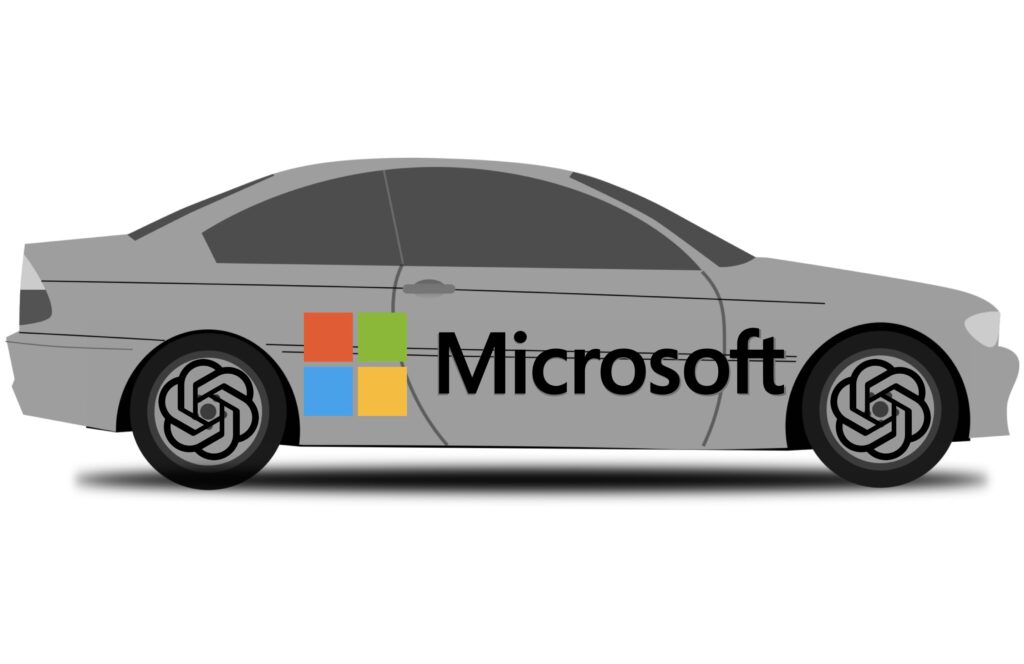

Since OpenAI launched the generative AI race in mid-2022, Microsoft has been benefiting from the special relationship it had with the company by deferring many of the costs associated with using its cloud, Azure, as part of its support program a startups innovative.
This relationship allowed Microsoft to become a preferred partner of OpenAI and incorporate its algorithms into its products before others and invest in the company, although it did not obtain voting rights. Without a doubt, Microsoft benefited greatly from that relationship, because it allowed it to capitalize on a position in artificial intelligence that it clearly did not have sufficiently matured and to integrate ChatGPT into Office365 in the form of Copilot in an advantageous way, with all the positioning advantages that this entails. Microsoft’s car in artificial intelligence always had OpenAI wheels.
Now, this integration obviously has its costs in terms of use of the algorithm, which entails a cost in tokens Although Microsoft will surely have known how to negotiate advantageously, it could become important, particularly if its many corporate clients start using Copilot as if there were no tomorrow. It is the latest in a series of examples that show how Microsoft, which has invested more than $13 billion in OpenAI over the last five years as part of that partnership between the two companies, It is trying to reduce its dependence on its models.
So Microsoft, aware of the cost that this can represent on its income statement, has started to work to reduce your dependence on OpenAItrying to develop your own models to replace ChatGPT in Copilot. In addition to training their own smaller modelsincluding the last Phi-4Microsoft is also working to customize other open models to make 365 Copilot faster and more efficient. The objective is to achieve a cost reduction for Microsoft associated with the execution of 365 Copilot, and potentially transfer part of those savings to its end customers, thus gaining the attractiveness of a product that has achieved very important penetration thanks to the domain that the company has in the software corporate.
Many companies use Copilot in Office 365 for a legal reason: you need to ensure that the data they enter through their prompts They are maintained at an appropriate level of confidentiality, are not shared as a training base with other potential users, and are processed in data centers located in the European Union. But beyond that, if Microsoft manages to gain a cost advantage, the value proposition could become much more interesting.
Microsoft’s behavior may also be reasonably representative of what many companies might consider doing as the barriers to entry to the development of generative algorithms are lowered: start by simply launching prompts a RAGcorporate files created with the company’s information, but try those prompts in other more economical models, possibly open source or that can run with fewer resources in their own facilities. It is perfectly possible that many of the questions that a company’s users ask a generative algorithm are trivial enough to be answered by much less sophisticated and cheaper models than those of OpenAI, which would save a lot of money. to those who know how to carry out these types of optimizations.
Does Microsoft’s move mean that we are, in some way, advancing a certain commoditization of generative artificial intelligence algorithms? The trend as such seems frankly difficult to avoid in the medium term. The question for me is not what, it is when it will start to occur, and how the competitive landscape will evolve when it occurs. When the popularization of the Internet began, the companies that began to sell access to the network, such as AOL or Compuserve, had their moment, but they ended up swallowed up by that popularization, which meant an absolute commoditization of access, leaving practically nothing of money to earn more than telecommunications companies.
Will we see a similar phenomenon in generative artificial intelligence?